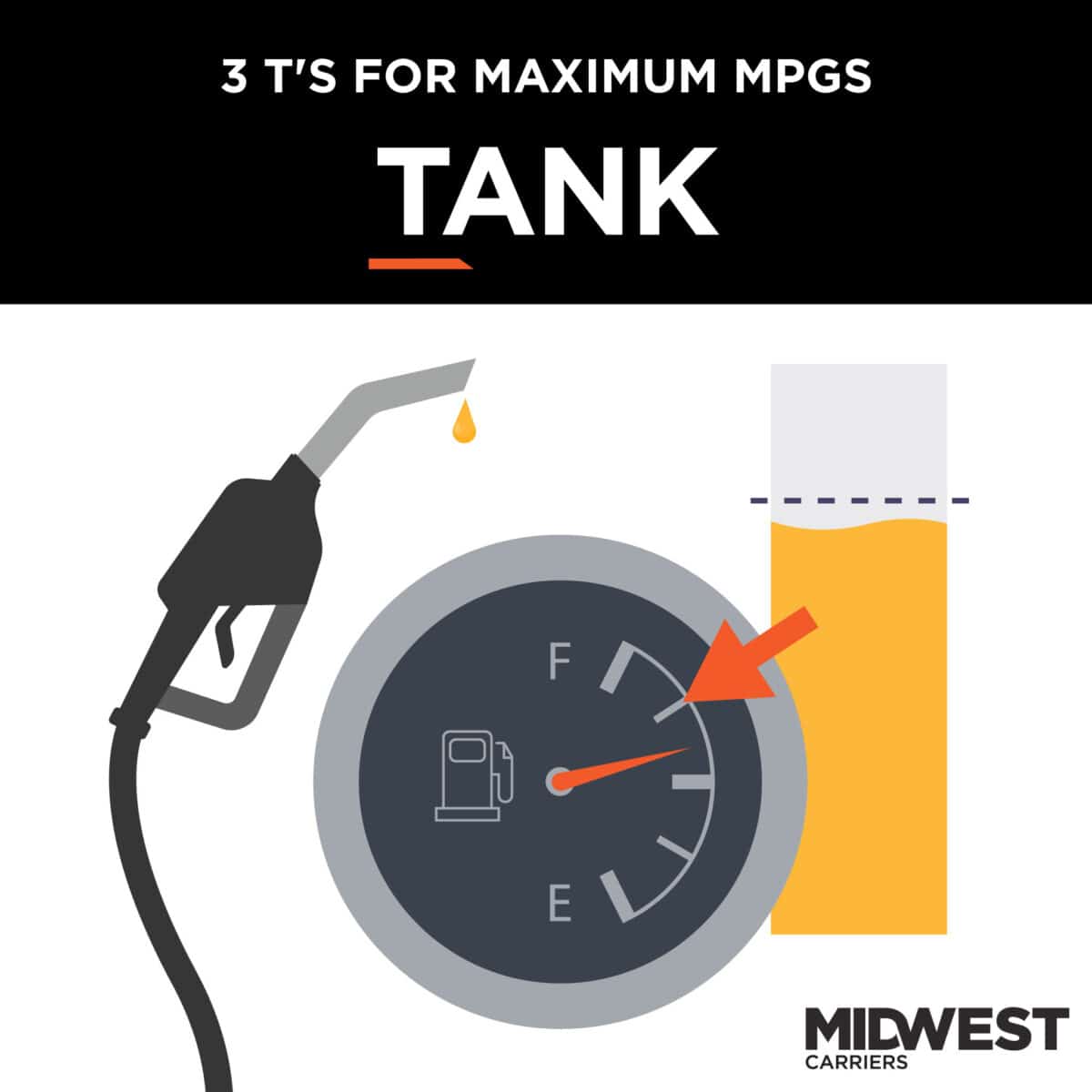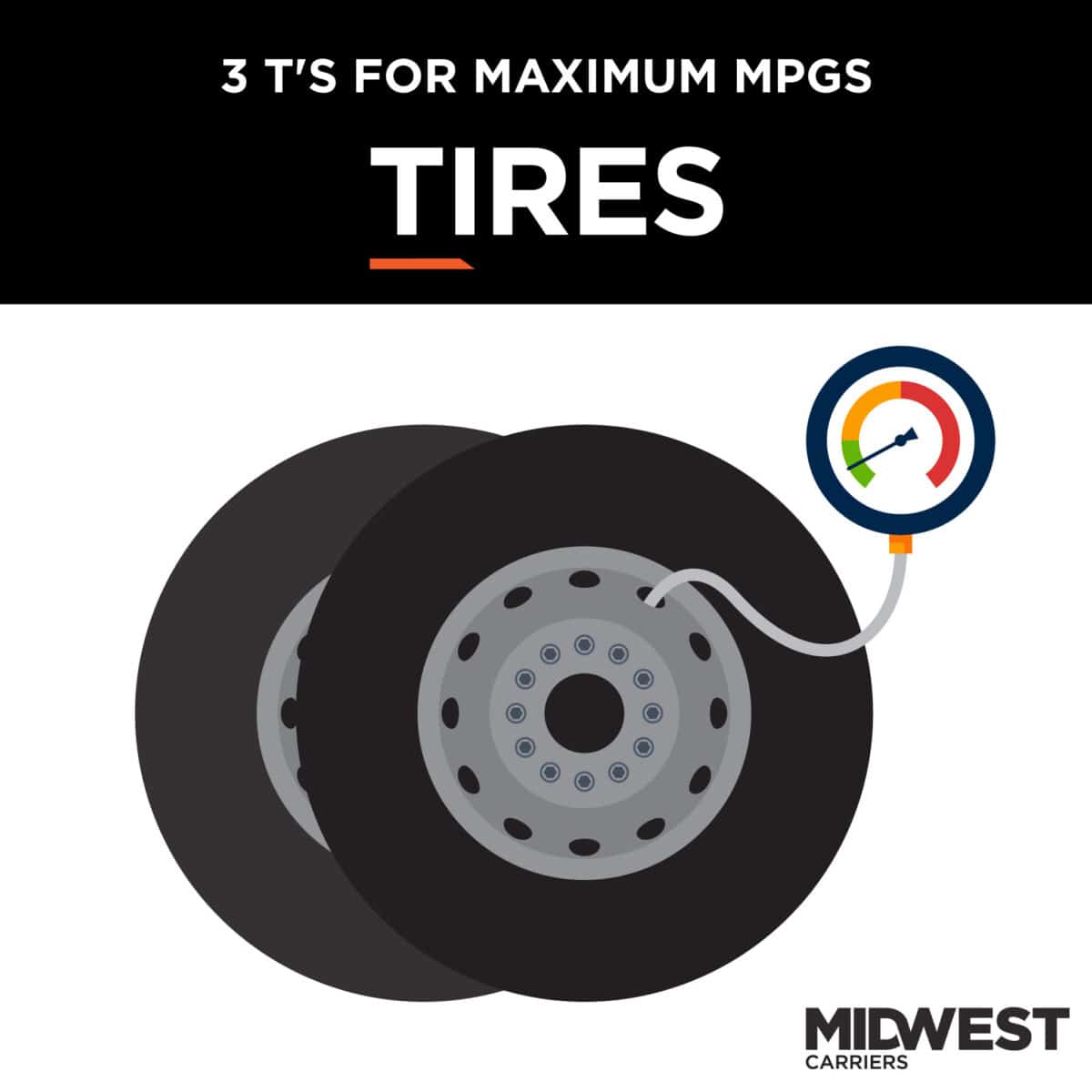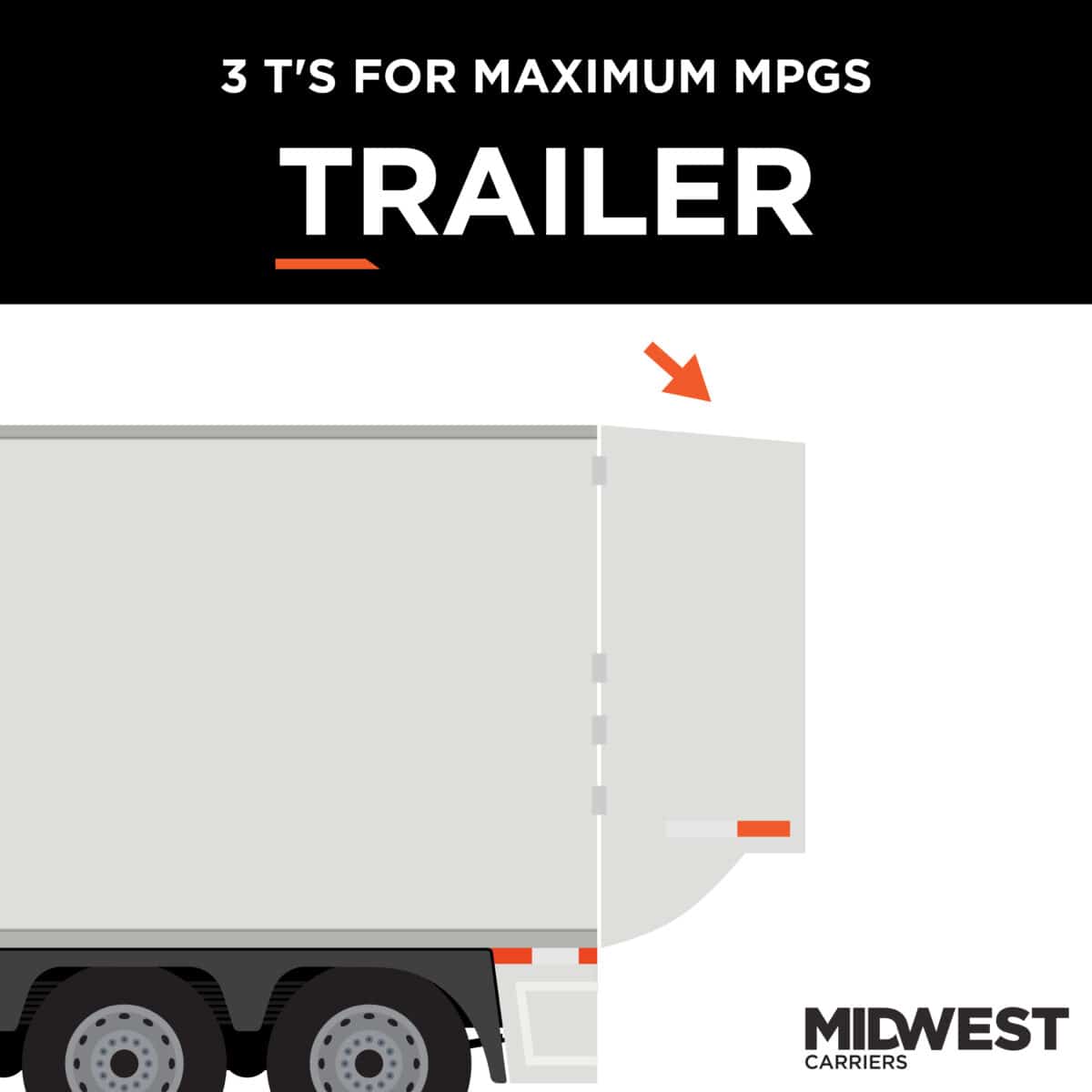The 3 T’s Before You Leave
Create a three-point checklist for yourself before starting any route. First, think about your fuel tank and map the route for the least expensive options that are close to the highway and at natural stopping locations for your timeline. Second, check your tire pressure and make adjustments based on the weight of your freight, changing weather, and road conditions. Finally, ensure your trailer is as aerodynamic as possible for optimal movement of air around the truck as you drive down the interstate.

Tank
Don’t Overfill
Increasing fuel efficiency in your truck starts by not overfilling your tank. It makes sense: the heavier the load a truck is carrying, the more work is required by the engine to move the vehicle. The higher the engine’s RPM, the lower the MPG for the trip. While it may seem counter-intuitive to make more stops to get fuel, many times these can be incorporated into stops you already make by properly planning ahead of time.
Use Momentum
Pay attention to the grade of the road and leverage momentum where possible. As a force, momentum can propel you forward instead of relying on your engine for 100% of the miles on the route. Assess the grade of your route before driving to estimate how far your tank of fuel will last. Going through mountain country? Expect to take a hit on fuel efficiency. But while you can’t change the geography, safely using natural momentum for a downhill stretch can make an incremental difference that adds up over hundreds of miles!

Tires
Pressure Matters
It really is the simple things that make the biggest difference and that’s true with your trucks’ tire pressure and how it affects your overall mpg. Tire pressure is important for four major reasons: safety, regulation, the life of the tires, and fuel economy. Having your pressure too low or too high is compromising on each one of these fronts. Changes in weather and temperature, as well as the weight of the haul, will also affect the pressure in your tires.
The Best PSI for Fuel Economy
It’s more than just thumping the tires a couple of times. You should be using your tire pressure gauge to get between 75-80psi in each of those tires for most load weights during every pre- and post-trip inspection. This is one of the most important things you can do for both fuel efficiency and safety on the road.

Trailer
Reduce Drag
The natural shape of a truck is not the most aerodynamic, but you can create a more streamlined shape by utilizing tails and skirts. These change the way air moves around the truck and reduce drag on the highway. Reducing resistance translates directly to fuel economy.
Tighten the Trailer
Keep in mind the gap between the tractor and trailer can create wind force that acts like a brake, so find the “sweet spot” where you don’t have to adjust the fifth wheel often. Always remember to scale your load, as moving your fifth wheel will drastically alter your axle weights.
Ready to Drive for Midwest?
Contact our Driver Employment Specialists today or call 920-462-5037!
"*" indicates required fields
